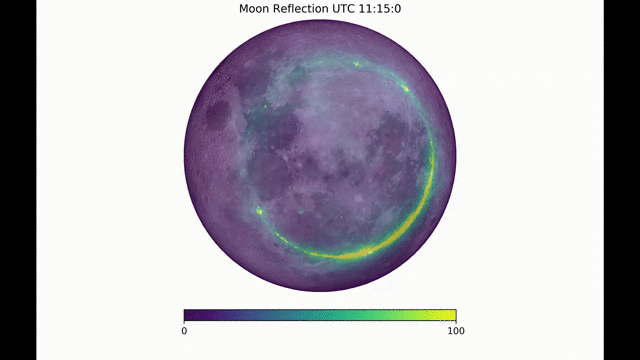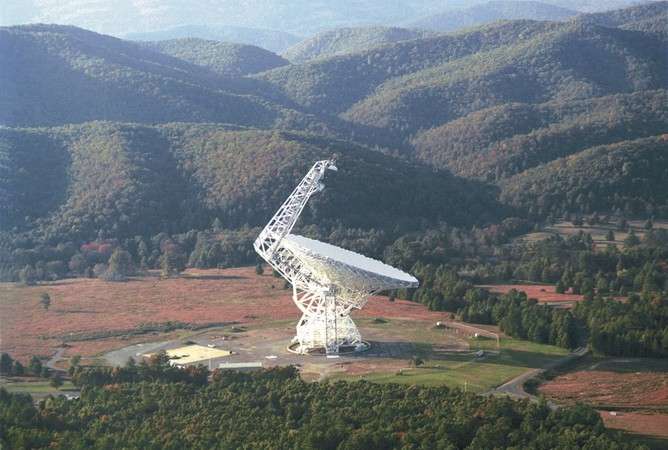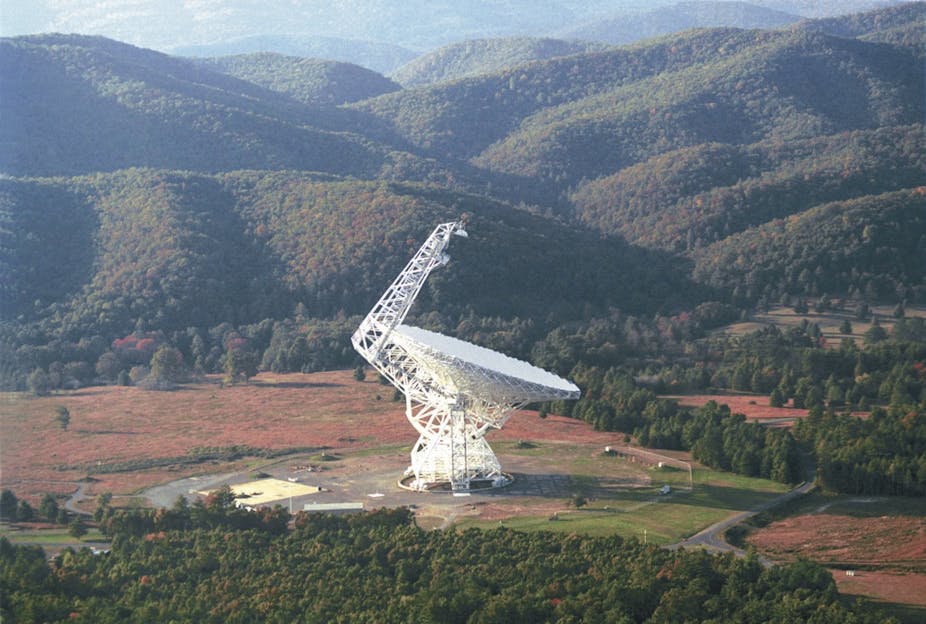Radio telescopes detect radio waves, while optical telescopes observe visible light. Each type provides unique insights into celestial objects.
Studying the universe requires a range of tools, including both radio and optical telescopes. Radio telescopes allow astronomers to study cold gas and dust in space, revealing details about star formation and galaxies. Optical telescopes, on the other hand, are essential for observing visible light emitted by stars and celestial objects, providing information on their temperature, composition, and movement.
By combining data from both types of telescopes, scientists can develop a more comprehensive understanding of the cosmos. Discoveries made using radio and optical telescopes have expanded our knowledge of the universe and continue to shape our understanding of the cosmos.

Credit: phys.org
History Of Telescopes
The journey of telescopes began with the quest to explore the wonders of the sky. From the humble beginnings of optical telescopes to the revolutionary emergence of radio telescopes, humanity’s fascination with the cosmos has driven relentless innovation in observational technology.
Development Of Optical Telescopes
Optical telescopes paved the way for astronomical discoveries, expanding our understanding of the universe with clear images of celestial objects. Galileo’s refracting telescope marked a pivotal moment in history, enabling the observation of distant objects with remarkable detail.
Emergence Of Radio Telescopes
Radio telescopes revolutionized our perception of the universe by detecting radio waves emitted by celestial bodies. Their development was a breakthrough in astronomical research, allowing scientists to explore cosmic phenomena beyond the visible spectrum.

Credit: www.amazon.com
Functionality
Radio telescopes capture radio waves while optical telescopes observe visible light. Radio telescopes offer functionality to study celestial objects otherwise invisible to optical telescopes. Optics are crucial for precise imaging, while radio waves provide unique insights into the universe.
variationsfunctionality. Each type offers unique advantages for studying the cosmos.Optical Telescope Functionality
visible lightnear-infrared wavelengths to capture images of celestial objects. These telescopes are ideal for observing planets, stars, and galaxies.Radio Telescope Functionality
radio wavesgalaxiespulsarsblack holes. They are beneficial for studying objects that do not emit visible light. Recent advancements allow radio telescopes to collaborate with optical telescopes for a more comprehensive view of the universe.Advantages And Limitations
When it comes to studying the universe, both optical and radio telescopes play a vital role. Each type of telescope has its own set of advantages and limitations, which are essential to understand for astronomers and astrophysicists. Let’s delve into the specific strengths and weaknesses of optical and radio telescopes.
Advantages Of Optical Telescopes
Optical telescopes offer several significant advantages, making them valuable tools for astronomers:
- Capable of capturing high-resolution images
- Ability to observe a wide range of celestial objects, including planets, stars, and galaxies
- Provide detailed information about the chemical composition and physical characteristics of celestial bodies
Limitations Of Optical Telescopes
Despite their advantages, optical telescopes also have certain limitations:
- Restricted by atmospheric conditions and light pollution
- Less effective in observing objects obscured by dust and gas
- Limited in their ability to detect non-visible wavelengths of light
Advantages Of Radio Telescopes
Radio telescopes offer unique advantages that complement the capabilities of optical telescopes:
- Effective in studying objects that emit radio waves, such as pulsars and quasars
- Not affected by atmospheric interference, making them suitable for identifying celestial objects in any weather conditions
- Ability to penetrate through cosmic dust and gas, revealing details not visible in the optical spectrum
Limitations Of Radio Telescopes
Despite their strengths, radio telescopes also have limitations that need to be considered:
- Lack the ability to capture high-resolution images compared to optical telescopes
- Require extensive data processing to interpret the radio signals received from celestial sources
- Challenges in pinpointing the precise location of radio sources due to diffraction effects
Applications
Applications of radio and optical telescopes differ based on wavelength detection. Radio telescopes capture long wavelengths, ideal for studying cold gas in outer space. Optical telescopes operate with shorter wavelengths, making them suitable for observing visible light emitted from stars and galaxies.
Telescopes have revolutionized our understanding of the universe, enabling us to explore its vastness and unravel its mysteries. They play a crucial role in various scientific disciplines and have found practical applications in our daily lives. In this section, we will examine the applications of both optical and radio telescopes, highlighting their contributions in scientific research as well as their everyday utility.Scientific Applications Of Optical Telescopes
Optical telescopes, as the name suggests, rely on visible light to observe celestial objects. These telescopes have been instrumental in advancing our knowledge in several scientific fields. Here are some significant scientific applications of optical telescopes: 1. Astronomy: Optical telescopes are widely used in astronomy to study planets, stars, nebulae, galaxies, and other astronomical phenomena. They enable astronomers to observe and analyze the light emitted or reflected by these celestial bodies, providing valuable insights into their composition, motion, and evolution. 2. Planetary Science: Optical telescopes help scientists study the surfaces and atmospheres of planets in our solar system. By observing visible light, they can identify and analyze features such as volcanic activity, weather patterns, and the presence of water and other elements. 3. Astrophysics: Optical telescopes are indispensable tools for astrophysicists to investigate the physical properties and behavior of celestial objects. By analyzing the light spectrum emitted by stars and galaxies, scientists can determine their temperature, chemical composition, and movement, leading to breakthroughs in our understanding of the universe’s fundamental laws.Scientific Applications Of Radio Telescopes
Unlike optical telescopes, radio telescopes detect and analyze radio waves emitted by celestial objects. This unique capability has opened up new avenues of scientific exploration. Here are some noteworthy scientific applications of radio telescopes: 1. Radio Astronomy: Radio telescopes have revolutionized the field of radio astronomy by allowing scientists to observe and study radio waves emitted by astronomical objects. This has provided valuable insights into cosmic phenomena such as pulsars, quasars, and cosmic microwave background radiation, helping us understand the structure, origin, and evolution of the universe. 2. Exoplanet Detection: Radio telescopes have contributed to the discovery and characterization of exoplanets (planets outside our solar system). By detecting radio emissions from these distant worlds, scientists can determine their presence, size, and orbit, contributing to our understanding of planetary systems beyond our own. 3. Interstellar Chemistry: Radio telescopes also play a crucial role in studying interstellar clouds and molecular chemistry in space. By detecting radio signals emitted by various molecules in space, scientists can analyze the composition and physical conditions of these interstellar regions, shedding light on the formation of stars and planets.Practical Applications Of Telescopes In Daily Life
Beyond scientific exploration, telescopes also find practical applications in our day-to-day lives. Here are some ways telescopes benefit us in our everyday activities: 1. Amateur Astronomy: Telescopes designed for amateur astronomers allow enthusiasts to observe celestial objects from their backyards. These telescopes offer a window to the wonders of the night sky, fostering a deeper appreciation of our place in the universe. 2. Navigation: Telescopes have long been used for navigation, aiding sailors and explorers in determining their position and charting their course. By observing and identifying landmarks, distant objects, and celestial bodies, telescopes have played a vital role in ensuring safe maritime and land travel. 3. Surveillance and Security: Telescopes equipped with advanced imaging technologies are employed in surveillance and security applications. From monitoring large public areas to border control, telescopes enhance our ability to observe and respond to potential threats, ensuring public safety. In conclusion, telescopes have an array of applications ranging from scientific research to practical everyday use. Both optical and radio telescopes have revolutionized our understanding of the universe and have become indispensable tools in various fields. Whether unraveling the mysteries of space or exploring the wonders closer to home, telescopes continue to amaze and inspire us with their remarkable capabilities.Discoveries And Contributions
Both optical and radio telescopes have made significant discoveries and contributions to the field of astronomy. Let’s explore some notable findings and advancements made by these powerful instruments.
Notable Discoveries By Optical Telescopes
Optical telescopes, which gather visible light, have unveiled a myriad of breakthroughs and increased our understanding of the universe. These telescopes have unlocked the secrets of distant galaxies, exoplanets, and many celestial phenomena.
Here are some noteworthy discoveries made by optical telescopes:
- The discovery of exoplanets – Optical telescopes have captured the faint light from distant stars, helping us identify and study planets orbiting these stars. This has revolutionized our understanding of other planetary systems and the possibility of extraterrestrial life.
- Mapping galaxies and celestial bodies – Optical telescopes have produced remarkable images that allow us to observe and study different types of galaxies, star clusters, nebulae, and more. These detailed maps contribute to our knowledge of the universe’s structure and evolution.
- Probing distant galaxies and supernovae – Optical telescopes enable us to study the light emitted by galaxies millions or even billions of light-years away. By analyzing this light, astronomers can understand the composition, age, and motion of these celestial objects. Optical telescopes have also helped in detecting and studying powerful supernovae explosions, shedding light on the life and death of stars.
Contributions Of Radio Telescopes To Astronomy
Radio telescopes, on the other hand, collect radio waves emitted by celestial objects. These telescopes have made invaluable contributions and discoveries that complement the findings of optical telescopes.
Here are some significant contributions of radio telescopes to the field of astronomy:
- Exploring the birth of stars – Radio telescopes can penetrate cosmic dust clouds, allowing us to observe the birth of stars and the early stages of their formation. By studying the radio emissions, scientists gain insights into the processes that drive star birth.
- Detecting cosmic microwave background radiation – Radio telescopes have detected cosmic microwave background radiation, which is the residual radiation from the Big Bang. This discovery provided strong evidence for the Big Bang theory and revolutionized our understanding of the universe’s origins.
- Investigating active galactic nuclei – Radio telescopes have played a key role in studying active galactic nuclei (AGN). These compact regions at the centers of galaxies emit intense radio waves. By analyzing these emissions, astronomers gain insights into the physics of AGN and their role in galaxy evolution.
Overall, both optical and radio telescopes have significantly contributed to our understanding of the universe. By complementing each other’s strengths and capabilities, these telescopes have helped uncover fascinating discoveries and advance astronomical knowledge.

Credit: phys.org
Future Possibilities
As technology continues to advance, both optical and radio telescopes hold significant promise for future discoveries in outer space. The potential advancements in optical telescope technology and future prospects for radio telescopes are particularly fascinating areas of development.
Potential Advancements In Optical Telescope Technology
Advancements in optical telescope technology have the potential to revolutionize our understanding of the universe. Future breakthroughs may include the development of adaptive optics systems to counteract the distorting effects of Earth’s atmosphere. Innovations in mirror design and precision instrumentation are also promising areas of development.
New optical telescopes with larger apertures, such as the proposed Extremely Large Telescope (ELT) and the James Webb Space Telescope, are set to open up new frontiers in astrophysics. These technologies are expected to enhance our ability to observe distant galaxies, exoplanets, and black holes with unprecedented clarity and detail.
Future Prospects For Radio Telescopes
The future prospects for radio telescopes are equally enticing, with the potential for significant advancements in observational capabilities. Next-generation radio telescopes, such as the Square Kilometre Array (SKA), promise to unlock new insights into the early universe, dark matter, and cosmic magnetism.
Cutting-edge technologies, including advanced signal processing techniques and antenna designs, are anticipated to enhance the sensitivity and resolution of radio telescopes. These developments may enable astronomers to detect fainter and more distant cosmic phenomena, providing a deeper understanding of the cosmos.
Frequently Asked Questions For Radio Vs Optical Telescope
How Does A Radio Telescope Work?
A radio telescope works by detecting and amplifying radio waves emitted by objects in space. It uses a large dish or an array of antennas to collect the incoming waves, which are then converted into electrical signals and analyzed to create images and collect data on celestial objects.
What Can An Optical Telescope Observe?
An optical telescope can observe visible light from celestial objects, allowing astronomers to study stars, planets, galaxies, and other cosmic phenomena. It can capture detailed images, detect color variations, and reveal important characteristics such as size, temperature, and composition of the observed objects.
What Are The Advantages Of Using A Radio Telescope?
Using a radio telescope has several advantages. Radio waves can pass through dust clouds, allowing astronomers to observe objects that are obscured by interstellar matter. They can also detect emission from cool objects, such as cold gas and dust, which are invisible in the optical range.
Additionally, radio telescopes can detect and study phenomena like pulsars and cosmic microwave background radiation.
Why Are Optical Telescopes More Widely Known?
Optical telescopes are more widely known because they observe visible light, which is the range of electromagnetic radiation that humans can naturally see. This makes optical observations relatable and easier to comprehend for most people. Also, optical telescopes have been historically used for astronomy and are a prominent feature in popular media, contributing to their familiarity.
Conclusion
In understanding the universe, both radio and optical telescopes play crucial roles. Each has its unique strengths and limitations, contributing to our comprehensive knowledge of the cosmos. While radio telescopes offer insights into celestial objects’ composition, optical telescopes reveal their visual characteristics.
Ultimately, both technologies complement each other in exploring the depths of space.



